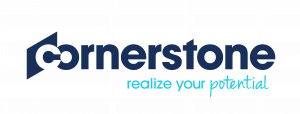This blog post is an excerpt from GovLoop’s recent guide The Human Resources Playbook for Government. Download the full guide here.
The government workforce of the future is drastically changing thanks to advancements in technology and the evolving demands of digitally savvy workers. Agencies are adjusting to managing multiple generations while also planning for two key issues: the pending retirements of seasoned workers and grappling with work-life balance issues for employees who are empowered to work anytime, anywhere on any device.
Technology has not only redefined when employees work but also how they work. In fact, some manual jobs — such as data entry associates and typists — are becoming obsolete, while the need for employees who embrace modern technologies to do their jobs more efficiently is growing. Jim Gill, Vice President of Government for Cornerstone OnDemand, sat down with GovLoop to provide some insights on the evolution of the government workforce and the role Cornerstone plays in helping agencies address the complex issues that come with change. As a leader in human capital management (HCM), Cornerstone develops cloud-based systems that help agencies recruit, train, manage and connect people across the organization.
“We’re starting to recruit a new generation of the government workforce,” Gill said. “Their daily lives are dictated by how they communicate and how they conduct their personal lives with this rapidly changing technology. They’re used to consuming information and discussing that information in real time. They’re going to expect forward-thinking technologies where they have a lot of collaboration in the workforce, as well as visibility and transparency into the mobility of their career path.”
The ideal solutions for meeting these workforce demands include cloud-based technologies that enable HR professionals to effectively manage the full hire-to-retire lifecycle of government employees. Gill says HR staff need solutions that are developed around the needs of employees, while also helping to increase recruitment, engagement, education and retention. For example, many cloud-based technologies help organizations better recruit millennials by giving hiring managers access to real-time data about the talent pool.
But implementing such technologies can be challenging because most agencies are still using siloed, legacy IT systems that are expensive to maintain and do not support real-time data analysis. However, the House of Representatives passed an IT modernization bill in September 2016 that establishes working capital funds for agencies to improve, retire or replace IT systems. This makes Gill hopeful that these types of developments will promote governmentwide use of efficient, adaptable and innovative technologies.
For example, agencies have gradually shifted to cloud solutions — specifically unified systems that give HR teams one portal, instead of disparate tools — to manage their entire workforce. “That gives HR professionals, as well as senior government officials, the ability to make informed decisions about the current workforce and the size and needs of the future government workforce,” Gill said.
Agencies are using Cornerstone’s capabilities to do more than just woo potential new employees. The Department of Housing and Urban Development (HUD) has made great use of Cornerstone Recruiting to better recruit top talent, Cornerstone Connect to boost engagement and collaboration, as well as Cornerstone Performance and Cornerstone Succession.
With a unified platform, all workforce data and every phase of the employee lifecycle are accessible to all users through a single interface. Gone are the days of fielding data from several IT systems and manually feeding it into HCM systems.
HUD began implementing these capabilities in 2013 in a phased approach that allowed the agency to capture essential HR data elements and ensure the various facets of the system worked together cohesively. HUD tested the system with newer employees, who were mostly millennials, and used their feedback to make necessary changes.
“There has never been a more important time for government agencies to get strategic about the workforce,” Gill said. “A unified human capital management solution enables government organizations to build the workforces they need by providing a single, streamlined tool instead of a series of disconnected programs.” Specifically, it helps agencies better manage limited resources and make more data-driven decisions around recruiting and learning, performance management, and succession planning.






Changing human capital trends has been driving companies to hire the best staff for their organization. As everything is getting online so it is imperative to use cloud based tools and go with the trends to hire professional and best staff.